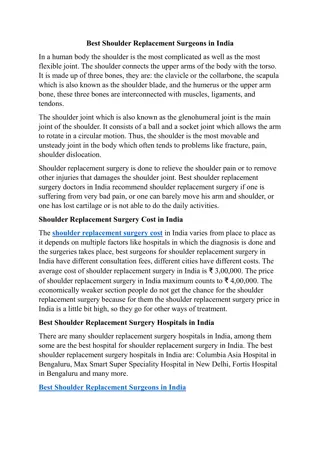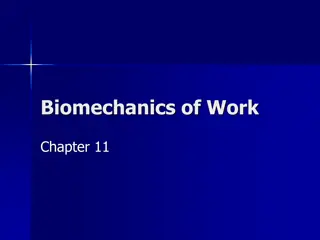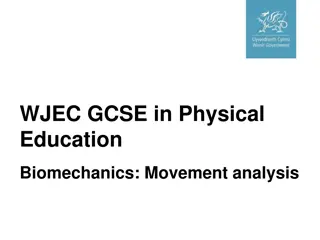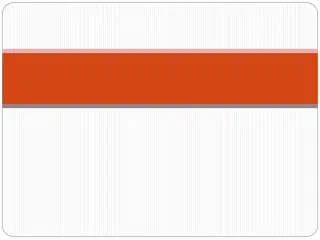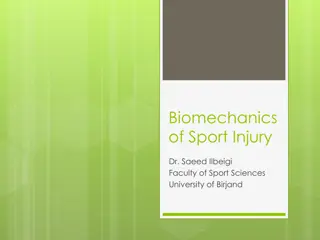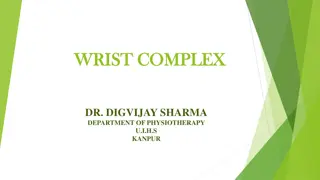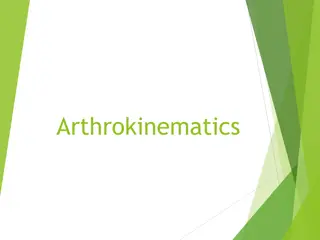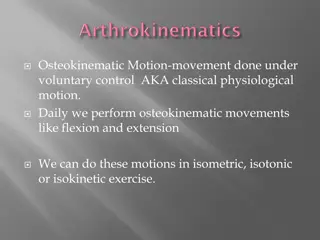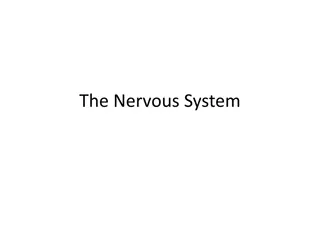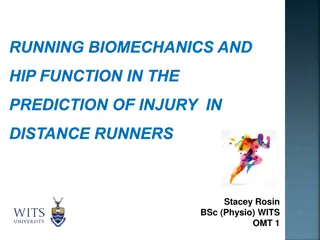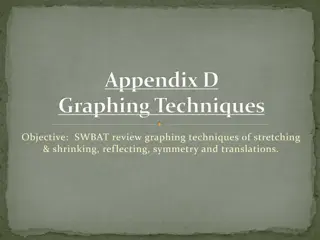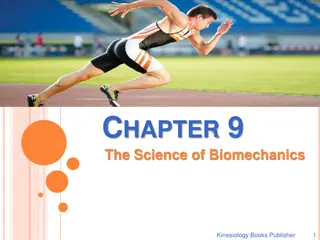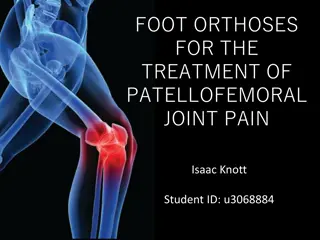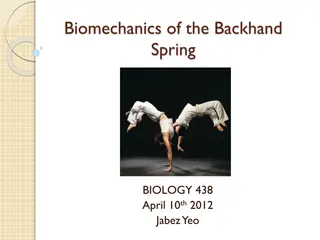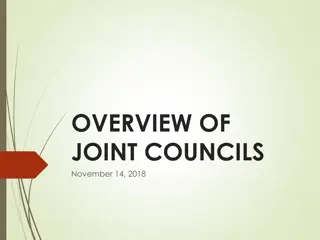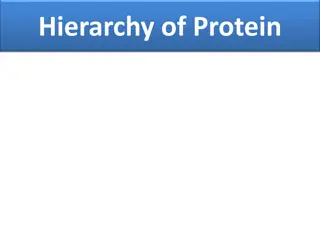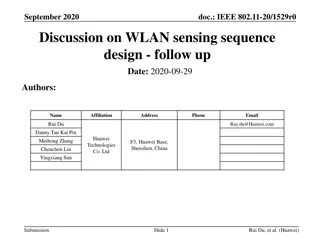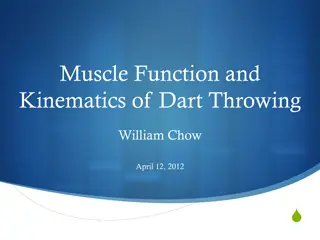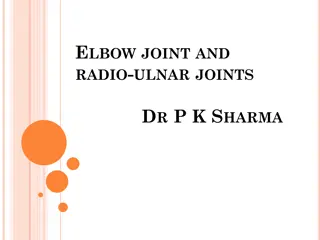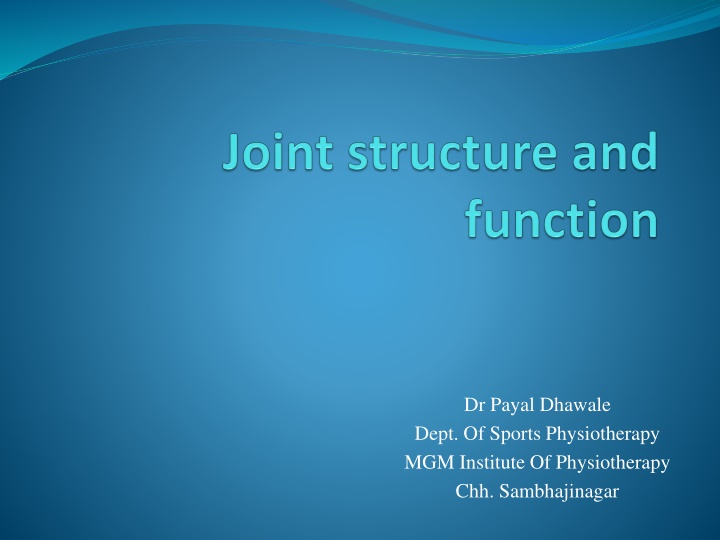
Connective Tissues and Cell Types in the Human Body
Explore the diverse world of connective tissues, from their supportive role in connecting different body tissues to the various cell types like fibroblasts and osteoclasts. Learn about fixed and transient cells, their functions, and their origins within the body. Dive into the structure of joints and the different classes of connective tissues, including cartilage and bone. Discover the essential roles these tissues play in maintaining the body's integrity and function.
Download Presentation

Please find below an Image/Link to download the presentation.
The content on the website is provided AS IS for your information and personal use only. It may not be sold, licensed, or shared on other websites without obtaining consent from the author. If you encounter any issues during the download, it is possible that the publisher has removed the file from their server.
You are allowed to download the files provided on this website for personal or commercial use, subject to the condition that they are used lawfully. All files are the property of their respective owners.
The content on the website is provided AS IS for your information and personal use only. It may not be sold, licensed, or shared on other websites without obtaining consent from the author.
E N D
Presentation Transcript
Dr Payal Dhawale Dept. Of Sports Physiotherapy MGM Institute Of Physiotherapy Chh. Sambhajinagar
Connective tissues- it connects the various tissues of the body and gives them support. All the cells of connective (supporting) tissue are derived from mesenchymal cells. This cell is also named as undifferentiated mesenchymal cell.
Joint structure include many connective tissues- bones, bursae, cartilage, discs, fat pads, labra, menisci. Plates, ligaments and tendons. 4 classes of connective tissue Connective tissue proper Cartilage Bone Blood
Connective tissue proper Loose connective tissue Areolar connective tissue Reticular tissue Adipose tissue Dense connective tissue Regular Irregular Elastic
Cartilage Hyaline Fibrocartilage Elastic Bone Compact spongy
Connective tissue cell types Two categories fixed cells (intrinsic, in the tissue) transient cells(within the circulatory system)
CELLS OF CT Fixed cells Transient cells Fibroblasts Plasma cell Chondroblast Lymphocytes Osteoblast Neutrophils Osteoclast Macrophage Adipose cells Mast cells Macrophages Mesenchymal cell
Fixed cells are a resident population of cells that have developed and remain in place within the connective tissue, where they perform their functions. The fixed cells are a stable and long-lived population that include:
Transient cells (free or wandering cells) originate mainly in the bone marrow and circulate in the blood stream. Upon receiving the proper stimulus or signal, these cells leave the blood stream and migrate into the connective tissue to perform their specific function.
Connective tissue is characterized by widely dispersed cells and a large volume of extracellular matrix CELLS Fibroblast is the basic cell of most connective tissue, it produces the extracellular matrix
Depending on its mechanical and physiological environment, the fibroblast produces different types of connective tissue and receives a new name. Eg chondroblast(cartilage) Tenoblasts(tendon) Ostoblasts (bones)
Extracellular matrix Part of connective tissues outside the cells ECM contains mainly proteins and water and is organized into fibrillar components and a surrounding matrix.
extracellular matrix fibrillar Interfibrillar Collagen Elastin
Fibrillar component of ECM contain two major classes of structural proteins: COLLAGEN & ELASTIN. Collagen the main substance of most connective tissues, is found in all multicellular organisms Collagen has tensile strength responsible for the functional integrity of connective tissue structures and their resistance to tensile forces.
collagen Plays an important role in tissue and organ development It is long, rigid structure in which three polypeptides are wound around one another in a rope like fashion. These polypeptides chains are called tropocollagen molecule.
collagen They are arranged in a triple helix. They are found everywhere in the body, but their type is dictated by their structural role in a particular organ. Polypeptide chains are held together by hydrogen bonds.
Collagen Many types of collagen have been identified, but the functions of many are not yet well understood. The roman numerals that name each type of collagen, eg type I , type II etc
collagen Type I collagen accounts for 90% of the total collagen in the body , is found in most of the connective tissues, include tendon, ligaments, menisci, fibrocartilage, joint capsule, bones, labra, skin Type I responsible for the tensile strength of tissue
collagen Type II found mainly in cartilage and intervertebral discs. Type III found on skin, joint capsule, muscle and tendon sheaths and in healing tissues
collagen Collagen type V & XI Cartilage, tendons
collagen Filamentous type VI found in blood vessels and skin anchoring VII anchoring filaments
Elastin Found in many connective tissues, but unlike collagen, the molecule consists f single alpha-like strands without a triple helix. Alpha like strands are cross-linked t each other to form rubber-like, elastic fibers.
When stretch - Each Elastin molecule uncoils into a more extended formation when fiber is stretched and recoils spontaneously when stretch force is removed. Elastin found in all joint structure, as well as skin, the tracheobronchial tree, and the walls of arteries.
Elastin makes up a much smaller portion of the fibrous components in the extracellular matrix than collagen. Aorta contains approximately 30% elastin and 20% collagen Ligamentum nuchae has 75% elastin and 15% of collagen Achilles tendon contains only 4.4% of elastin and 86% of collagen
Interfibrillar component Interfibrillar component of connective tissue contains water & proteins, primarily glycoproteins & proteoglycans (PGs). The interfibrillar matrix was referred to as the ground substances Ground substance is really a mixture of PGs and water
GPs are found in all tissues where as PGs are found mainly in connective tissues. The carbohydrate portion of PGs consists of long chains of repeating disaccharide units called Glycosaminoglycans (GAGs).
Proteoglycans (PGs) PGS mainly found in connective tissue PGS consist of long chains of repeating diasaccharide units called as GAGs Attract water through GAGs Regulate collagen fibril size More found in tissues subjected to alternating cycles of compression.
The GAG chains attract water into interfibrillar matrix creating tensile stress in collagen network. The collagen fibres resist & contain the swelling thus increasing the rigidity of ECM & resist compressive forces. Tissues subjected to compressive forces contains more PGs & large amounts of chondroitin & keratan sulfate. Tissues subjected to tension contains large amounts of dermatan sulfate
Glycosaminoglycan (GAG) Glycosaminoglycan (GAG) chains are long, linear carbohydrate polymers. GAGs are all very similar to glucose in structure and are distinguished by the number and location of attached amine and sulfate groups
Glycosaminoglycan Classification Hyaluronic acid (does not contain any sulfate) - exist as free GAG chain of variable length (used in OA knee to relieve symptoms ) Chondroitin sulfate -cartilage, bone Heparan sulfate -basement membrane,component of cells surface Heparin- intracellular granules in mast cells lining arteries Dermatan sulfate-skin, blood vessels Keratan sulfate -cornea, bone, cartilage often aggregated with chondroitin sulfate
Hyaluronan It differs from other GAG because it is not sulfated & does not attach to protein core . Hyaluronan exists as either free GAG chain or core molecule to which large number of PGs are attached.
Specific connective tissue structures Ligaments connects one bone to another, at or near a joint Ligaments may blend with the joint capsules and appear as thickening in the capsule Ligaments are heterogeneous structures containing a small amount of cells(10 to 20%) and a large amount of extracellular matrix (80 to 90%) Primarily cantain darmatan sulfate GAG.
The fibrillar component of the extracellular matrix in most ligament is composed of Mainly type I collagen With lesser amount of type III, type IV, type V collagen and varying amounts of elastin
Exception is ligamentum flavum having large amount of elastin. Collagen spread in multidirectional to resist forces in more than one direction. Tendons & ligaments insert to bone via fibrocartilage or fibrous attachment & change in composition near bone is termed as Entheses. The collagen fibres further blend into periosteum & attached to cortical bone via sharpey s fibres.
Ligaments are named acc. To their shape, location, bony attachments & their relation to one another. E.g. ant. Long.lig, MCL, LCL, coracohumeral etc.
tendons Connect muscle to bone. Usually named by the muscle e.g. biceps tendon. Tendon contain mainly type I collagen (95%) providing greater tensile strength along with type III, IV & V. Interfibrillar contain water, PG s mostly dermatan sulfate & GP s
Groups of fibers, enclosed by a loose connective tissue sheath is called as endotendon(bundle of fascicle) type III collagen, contains vessles Sheath encloses the entire tendon is called epitenon The paratenon is a double layered sheath of areolar tissue that is loosely attached to the outer surface of epitenon. Epitenon + paratenon= peritendon Tenndon sheath is tenosynovium
Bursae Bursae are flat sacs of synovial memb. & found in tight approximation structures like tendon & bone, bone & skin, & muscle & bone.
Cartilage Fibrocartilage (white) Elastic cartilage (yellow) Hyaline cartilage (articular)
Mainly contains type II, & aggregating PGs. Fibrocartilage forms bonding cement in joints where little motion occurs. E.g. IVD, glenoid & acetabular labra, TMJ. Yellow cartilage is found in ears, epiglottis & has more elastin.
Having small cellular & large ECM. Cells are chondrocytes & chondroblasts. Type II collagen, more of PG s, GAG s & hyaluronon. Major Pg is Aggrecan contains keratan & chondrotin sulfate.
Chondronectin(GP) play imp. Role in adhesion of chondroblast to type II collagen Hyaline cartilage is lacking of blood vessels , its nourishment derived from flow of synovial fluid.
Bones Bone is hardest of all connective tissue. Content: - organic fibrillar ECM mainly Type I collagen impregnated with inorganic material mainly hydroxyapatite - Fibroblast,osteoblast,osteocytes, osteoclast & progenitor cells
Bone has two layers,a dense outer layer and a spongier inner layer Inner layer is called cancellous bone Outer layer is called compact or cortical bone Periosteum fibrous layer that covers the entire surface of each bone except the articular surface
At microscopic level both cortical and cancellous bone show two distinct types of bone architecture: WOVEN BONE(primary,young bone) & LAMELLAR BONE(adult skeleton) Wolff s law - change in bone shape to match function Application of new forces causes osteoblast activity to increase and as a result, bone mass increases.

